By growing roses organically you can save money, reduce your workload, and support a sustainable eco-system that produces beautiful and fragrant roses throughout the growing season, for food, medicine, and aesthetics.
When I was in the Toronto area in June of 2018, I visited the Royal Botanical Gardens in Burlington. We were a week early to view the newly designed Centennial rose garden but they allowed us in for a peek. While we were there Cliff Carson, the Vice Chair of the Board of Directors came over and kindly answered our questions about the brand new organic rose garden that was just a week away from opening. The visit to this rose garden was inspirational.
The old centennial rose garden was planted in 1967, Canada’s 100th anniversary year, one year before my mother left Toronto, and brought me to Vancouver. It was planted with hybrid tea roses and floribunda roses, which are hard to keep disease free in the humid climate of Toronto. These varieties of roses are prone to fungal infections like black spot as well as insect predation from aphids, thrips, spider mites, and scale insects. 50 years later the rose garden had languished and was in need of a complete overhaul.
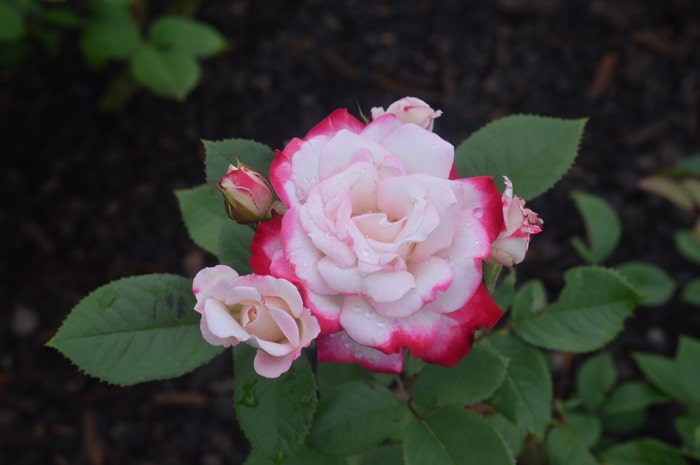
Candy cane cocktail rose
In 2009 the government passed laws which prohibited cosmetic pesticide and herbicide use. Those fashionable roses needed heavy chemical spray to keep the foliage free of black spot, powdery mildew, mosaic virus, and the usual insect pests like aphids, thrips, Japanese beetles, and spider mites. But growing roses with pesticides and herbicides wasn’t working anymore.
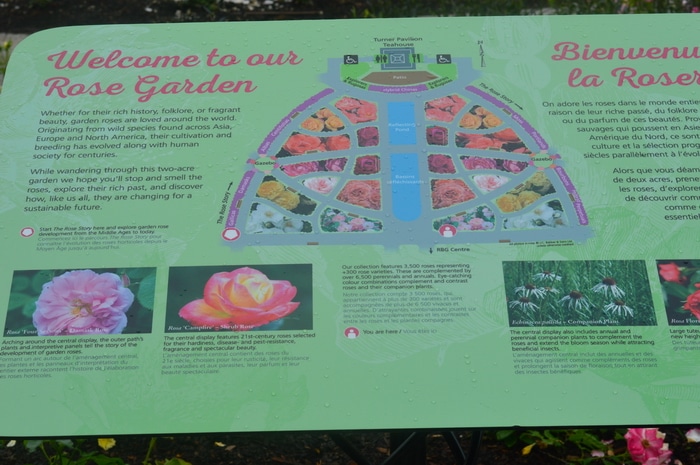
This year (2018) the Royal Botanical Gardens redesigned the rose garden using organic principles to create a healthy eco-system organic garden. The rose garden lies directly between the native plant — pollinator gardens and the herbalist gardens. These areas are rich in native flowering plants that attract beneficial predatory insects as well as pollinators. This alone however wasn’t enough to ensure success.
Rose selection for the organic rose garden was a key to success. The new rose garden is planted on two acres with over 3,500 hardy rose bushes representing over 300 rose varieties, including a few Canadian shrub roses. There are hardy heritage roses like apothecary rose, damask rose, and other classic roses designed so that they introduce the story and genetics behind today’s fragrant, hardy roses. There are hardy Canadian rugosa roses like Therese Bugnet, a personal favorite of mine, and many hardy landscape roses.
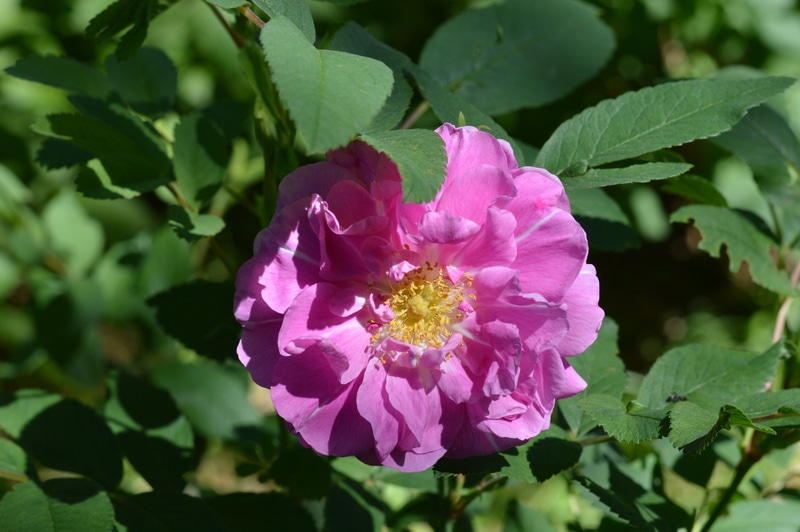
Therese Bugnet Rose
The roses are planted close together. Some within a foot of each other. Some spots had two roses planted in the same hole. Between the display roses are over 6,500 companion plants like yarrow, lavender, salvia, and chives that discourage Japanese beetle and make roses more fragrant. Soaker hoses were laid out around each rose. Watering roses from the base and preventing water from splashing on the leaves can prevent fungal disease in roses.
The roses are watered by soaker hoses in a trickle irrigation system to ensure wise use of water resources and to create a deeply rooted, sustainable garden, which once established can be watered only with seasonal rain. The organic soil is mulched to inhibit weeds and retain moisture ensuring high soil organic matter.
Mixing Your Own Organic Fertilizer for Roses
Organic fertilizer doesn’t just feed the plant for the season. It also provides soil health and feeds soil microbes for sustainable growth and a healthy eco-system. Roses are considered heavy feeders, needing supplemental fertilizer throughout the growing season. While compost and mulch provide some nutrients for the plants, additional fertilizers will increase growth and flower production. Using an organic approach, the first feeding should come just before growth begins in early spring. In a rose garden this initial feeding is followed every two weeks with additional fertilizer to stimulate fresh blooms and root development. Potassium provides roses with the strength to resist stress and improves overall health. The nitrogen levels should be lower than than the phosphorus levels so that blooms are not compromised by soft, lush foliage growth. A typical commercial organic rose fertilizer would have an N-P-K ratio of 3-4-3 or 4-8-4.
If you prefer to craft your own organic fertilizer from scratch, Bone meal (3-15-0) will provide enough phosphate for the growing season and only has to be applied once each season, usually in early spring. The bone meal breaks down slowly and releases phosphate to the plants over the growing season. Bone meal also offers the plants calcium and other trace minerals.
Alfalfa meal (5-1-2) offers a boost of nitrogen as well as trace minerals to the feed. Alfalfa has a triaconatol, a natural fatty-acid growth stimulant which will encourage new canes. Kelp Meal (1-0-4) adds a small amount of potassium and a lot of trace minerals that aid root development and support plant health. A mixture of equal parts of bone meal, alfalfa meal, and kelp meal offers a balanced fertilizer (3-5-2) that will help your organic roses thrive and support blooming. Use 1 cup per rose bush every 2 to 4 weeks during the growing season. Stop fertilizing 1 month before you expect your first frost, so that your plants are hardened off before the first hard frost, to avoid winter kill.
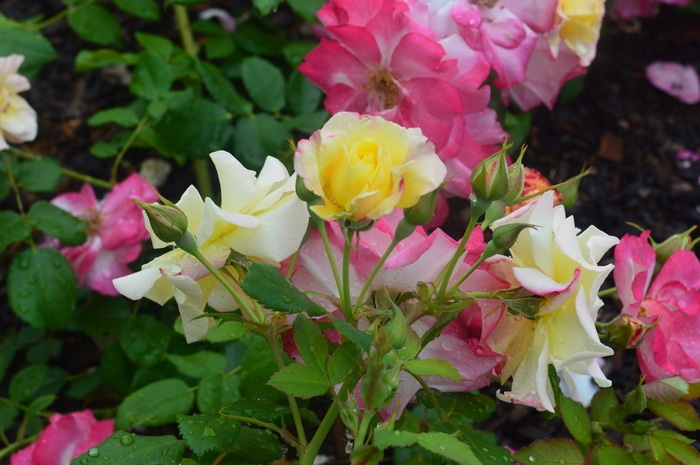
Campfire rose
Pruning Roses
Roses are generally pruned at the beginning of the growing season, in early spring, just before bud break. This is the time to feed the rose for the first time and add fresh mulch to the ground around the root zone. During this pruning remove any infected or blackened winter killed canes. If the bark is black, cut back to fresh green stem. Look at the rose cane bark for fresh outside buds, and prune just above an outside bud. This is where the pruned cane will branch.
Cut any dead stems off at the base of the plant. These will be thick and brown with no fresh buds.
Remove any crossing canes and open up the plant to allow for air circulation and prevent fungal infection.
Different varieties of roses require different kinds of pruning. Climbing roses need strong canes to support the growth. Prune these to open the plant allow for good air circulation, but leave the strongest canes to support the weight of the plant when in bloom.
Stop and Smell the Roses
Walk among your roses regularly so that you notice fungal or pest problems before they become a big deal. This is what we enjoyed so much as we toured the Centennial Rose Garden at the Royal Botanical Gardens. Looking at the beautiful flowers and seeing the interplay between companion herbs, roses, and pollinators is why you are growing roses organically to begin with. Enjoy them during the growing season as often as you can.
10 tips for growing roses organically
The newly renovated rose garden cost three million dollars to create but you can take the principles and create a small scale, eco-system rose garden where you live. By growing roses organically you can save money, reduce your work, and support a sustainable eco-system that produces beautiful and fragrant roses for food, medicine, and aesthetics.
- Plant roses that are disease resistant
- Plant roses that are suitable for your climate
- Use a drip irrigation system to avoid splashing water on the leaves of roses
- Plant twice as many companion plants as you have rose bushes
- Plant roses closer together than you think they should be planted
- Build up the planting soil with organic amendments
- Mulch to retain moisture and inhibit weeds
- Use an organic fertilizer that is high in phosphorus to promote an abundance of blooms
- Prune to encourage air flow and remove diseased canes
- Walk among your roses regularly so that you notice problems before they become to large to handle.
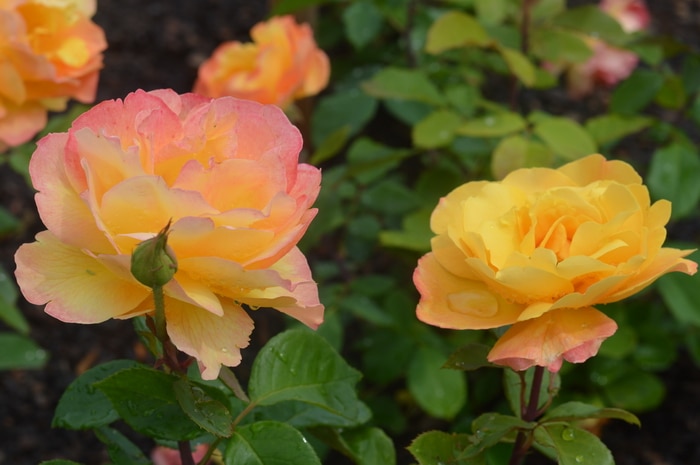
Strike it rich rose
Growing roses for medicine
And while you are considering the possibilities note that fragrant roses are one of the most bioactive, medicinal plants in the garden. They are rich in antioxidants and are traditionally used as medicinal plants, as well as culinary and cosmetic plants throughout the world. See this post about the medicinal benefits of roses.
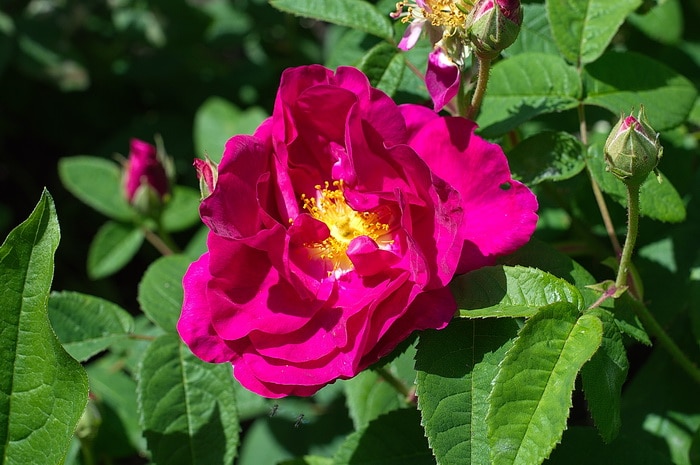
The ancient Apothecary Rose
Every part of the rose plant can be used medicinally except the thorns. Rose leaf tea has more antioxidants and polyphenols than green tea. Rose petal honey is a flavorful honey that is also beneficial for sore throats and coughs. Rose petal jam is delicious and takes on the rich colors of the roses that you use. Rosehips have traditionally been used as a vitamin C supplement and to ward off winter colds.
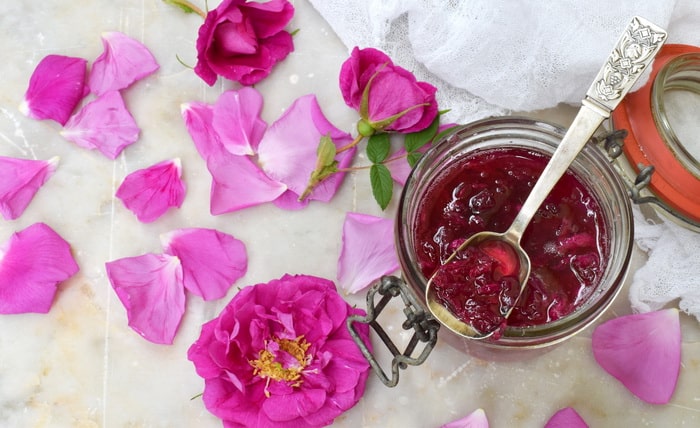
Ideally you will want to choose hardy, fragrant, repeat blooming roses for your rose garden from the Rugosa roses class, species roses that are hardy in your region, or single blooming roses from the Rosa gallica class, like an apothecary rose. While there are many other hardy roses, these species of roses have proven to be highly medicinal and bioactive so they are optimal for herbal medicinal use, for cosmetic use, for culinary use and for just beautifying your home and garden.
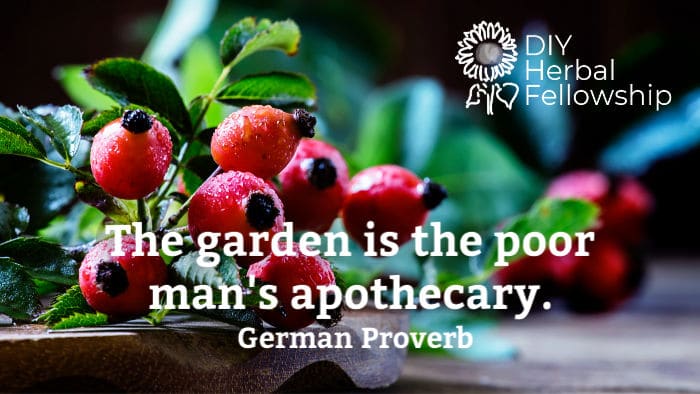
Propagating Roses
If you have a heritage rose you’d like to multiply in your garden or share with a friend, you can easily propagate them through hardwood cuttings, softwood cuttings and by layering.

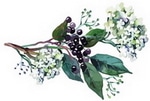
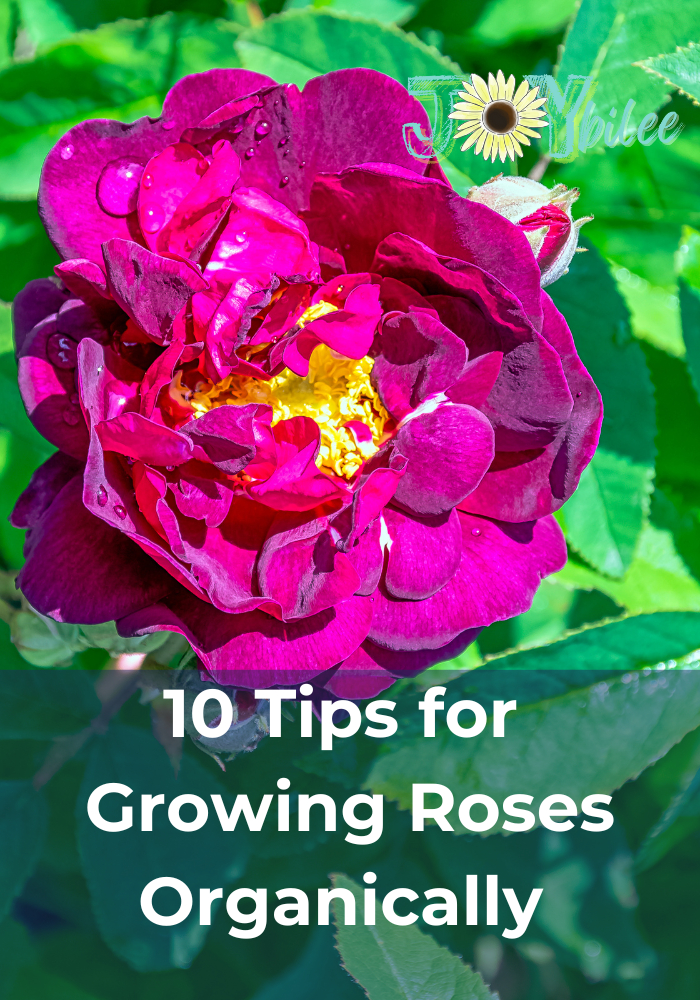
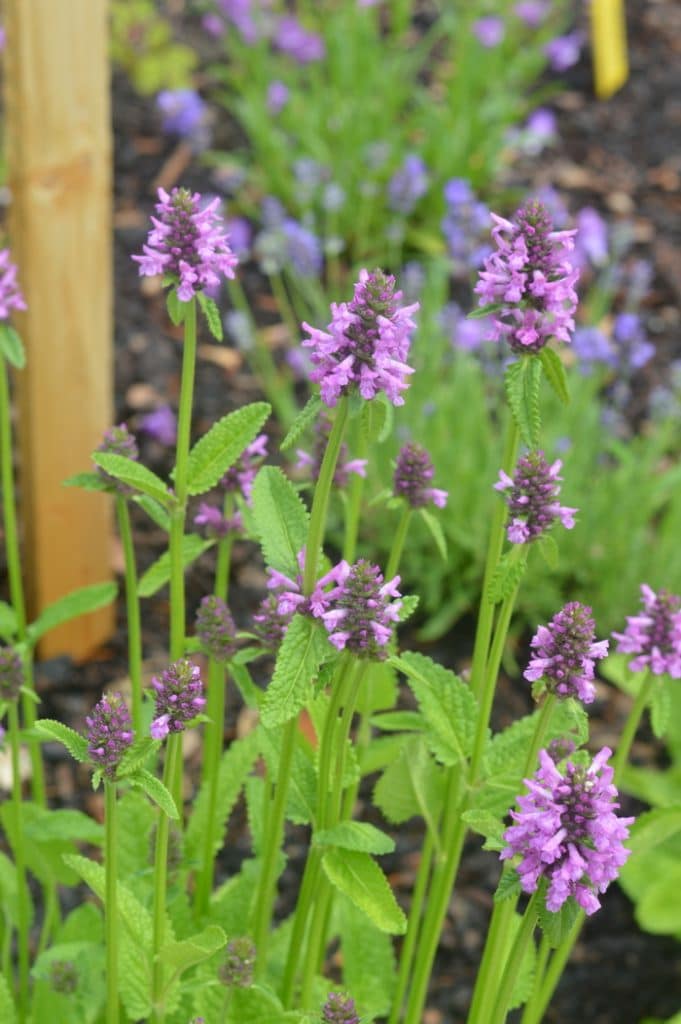

thank you joybileefarm for giving me wonderful information
I have both of those roses in my garden now. They are just getting established. Thanks for your feedback.
I grew Apothecary roses in Colorado. When they got black spot, I added eggshells, coffee grounds and banana peels to the soil around the roots…. Problem solved!!!
I love roses – my two favorite medicinal roses are the above mentioned Apothecary Rose and another charming rose, Rose de Rescht. Apothecary blooms once, but for quite a long time if you start harvesting the roses early in the bloom cycle. Rose de Rescht blooms all summer. The more roses you harvest, the more it blooms. LOVE!!!